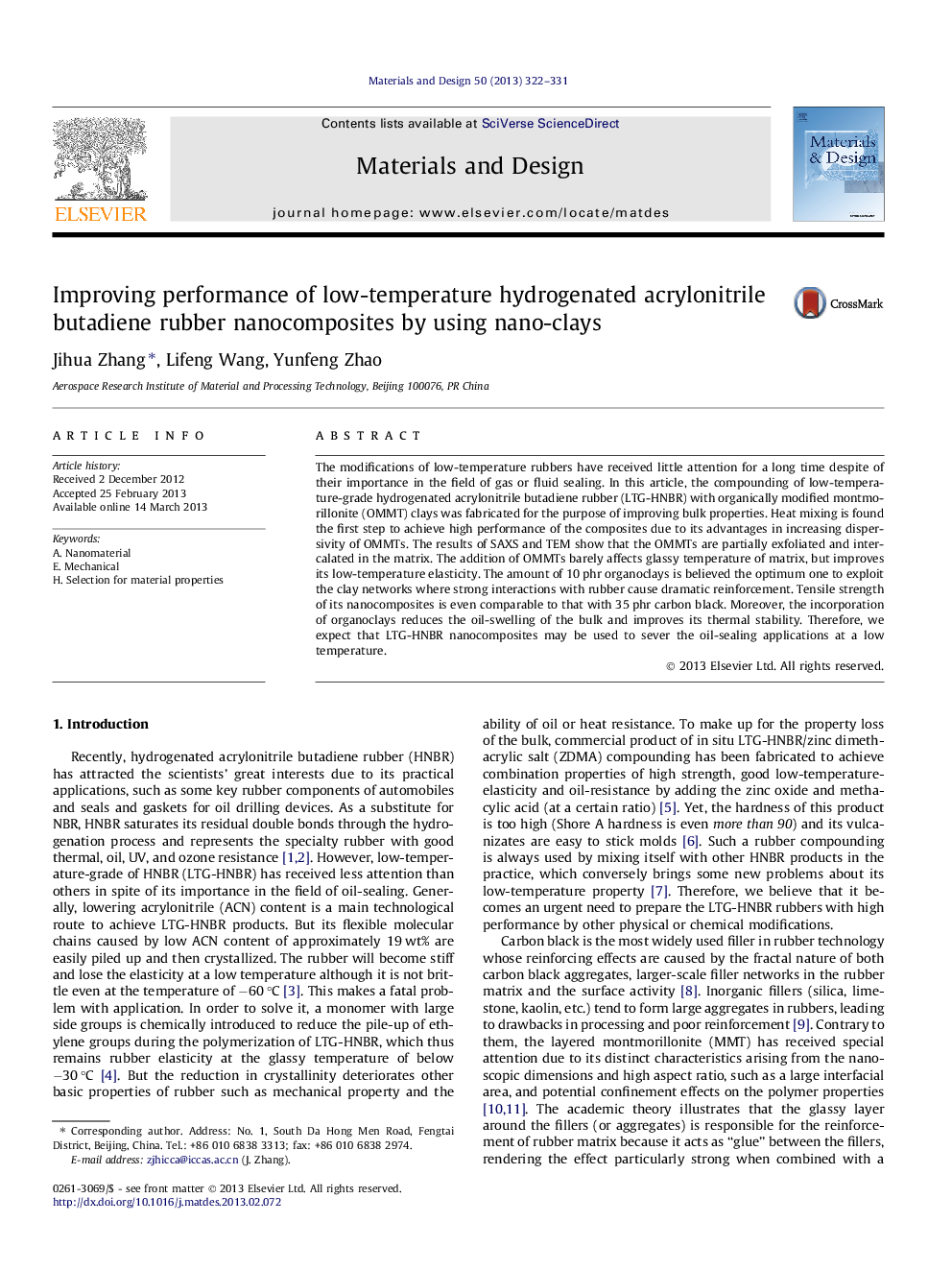| Article ID | Journal | Published Year | Pages | File Type |
|---|---|---|---|---|
| 829943 | Materials & Design (1980-2015) | 2013 | 10 Pages |
The modifications of low-temperature rubbers have received little attention for a long time despite of their importance in the field of gas or fluid sealing. In this article, the compounding of low-temperature-grade hydrogenated acrylonitrile butadiene rubber (LTG-HNBR) with organically modified montmorillonite (OMMT) clays was fabricated for the purpose of improving bulk properties. Heat mixing is found the first step to achieve high performance of the composites due to its advantages in increasing dispersivity of OMMTs. The results of SAXS and TEM show that the OMMTs are partially exfoliated and intercalated in the matrix. The addition of OMMTs barely affects glassy temperature of matrix, but improves its low-temperature elasticity. The amount of 10 phr organoclays is believed the optimum one to exploit the clay networks where strong interactions with rubber cause dramatic reinforcement. Tensile strength of its nanocomposites is even comparable to that with 35 phr carbon black. Moreover, the incorporation of organoclays reduces the oil-swelling of the bulk and improves its thermal stability. Therefore, we expect that LTG-HNBR nanocomposites may be used to sever the oil-sealing applications at a low temperature.
► Little attention is paid to the modification of low-temperature HNBR. ► The mechanical, thermal and oil-resistance property of HNBR is improved by OMMTs. ► 10 phr organoclays is optimum amount to exploit the interaction of clay networks. ► The nanocomposites are expected to serve low-temperature applications.
